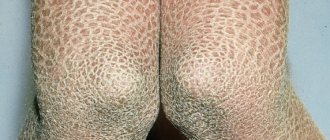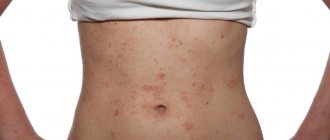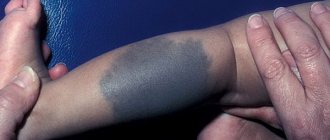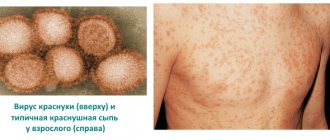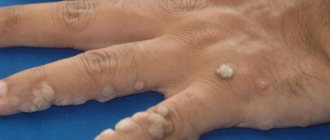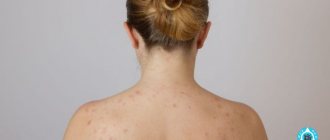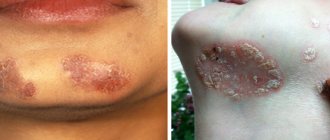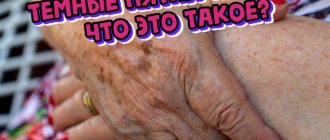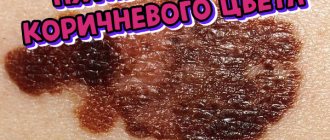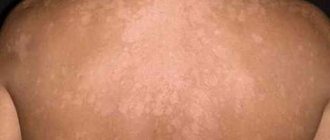According to dermatologists, dry patches on the skin can appear for various reasons, regardless of a person’s age and state of health.
There are many factors for the painful condition, the occurrence of allergic reactions, peeling and redness of the skin.
To determine as accurately as possible the nature of the occurrence of such symptoms, it is necessary to undergo a general examination, based on the results of which the doctor will make a diagnosis and prescribe individual treatment.
However, it will not be superfluous to know the main reasons for the appearance of spots on the skin and how to treat them.
The main causes of dry patches on the skin
When a dry spot on the skin flakes and itches, this is a consequence of a malfunction of the sebaceous glands , which are responsible for moisturizing and nourishing the skin. This condition can be triggered by the following factors.
Allergic reaction
Allergies often result in the appearance of red, itchy, dry patches on the skin, causing significant distress to a person.
The causes of this condition depend on the individual characteristics of the body ; often the causative agent is cosmetics and detergents, as well as various types of food.
To get rid of stains, it is necessary to identify and eliminate the causative agent of the allergic reaction.
Stressful effects
Excessive moral and physical stress leads to nervous tension and stress , which is manifested by the appearance of dry spots on the skin.
In addition, an unstable mental state entails diseases of the cardiovascular system.
First of all, you should calm down, give the body proper rest , which will help get rid of the symptom that has arisen and prevent the development of complications.
Pathologies of fungal origin
Dry spots on the skin often occur due to various types of fungal diseases. The spots may vary depending on the type of pathology.
A dermatologist will help you choose the most effective treatment after examining you and taking scrapings from the affected skin.
Note! Treatment should begin at an early stage of the disease, as it can develop into a chronic form.
Pathologies of the digestive tract
Dry spots on the skin that peel and itch often appear due to the development of diseases of the gastrointestinal tract.
Often the problem lies in an unbalanced diet , an excess of harmful foods in the daily diet and a lack of regular intake of essential vitamins and minerals into the body.
Various skin diseases
The cause of the appearance of spots on the skin may be the presence of dermatitis . This symptom is often observed in the early stages of psoriasis and eczema.
Impact of the external environment
Prolonged exposure to the sun, windy weather or extremely low temperatures lead to the appearance of flaky spots.
Having determined the factor that provoked this condition, you should begin treatment as soon as possible - this will help protect the body from complications.
Mastocytosis
Mastocytosis is several diseases combined into one group, the features of which are the accumulation and proliferation of mast cells.
Typically, this type of pigmentation appears in young children before they reach 3 years of age. This disease manifests itself in different forms:
- maculopapular appearance - the appearance of papillomas or vesicles;
- nodular appearance - nodules or lumps appear on the skin;
- solitary appearance - with neoplasms in the form of broad or smooth nodules;
- erythrodermic appearance - the appearance of yellow-brown itchy lesions of dense consistency;
- eleangiectatic appearance - the skin is affected by dark red spots.
By performing a skin biopsy and a clinical blood test, only a dermatologist can determine the cause of the disease. Often the cause of pigmentation is lymphoma, hemangioma, lymphogranulomatosis, dermatofibroma, etc.
Photo and treatment
For treatment, the doctor prescribes cyproheptadine hydrochlorides, serotonin-modifying drugs, medications used for allergic reactions, anti-inflammatory drugs and cytostatics. After effective treatment, hypopigmentosis is treated with surgery.
Causes of white dry spots on the skin
The appearance of white spots on the skin indicates the destruction of melanin.
There are several most common reasons:
- Lichen versicolor is a fungal disease characterized by the appearance of white spots covered with flaky skin and having clear edges. Over time, the size of the spots increases, but no burning, pain or itching is observed. Once the root cause is eradicated, the spots disappear within a few months;
- Excess of ultraviolet radiation. Burnt areas of the skin peel off, causing white spots to appear. When using special cosmetic preparations, the condition returns to normal after a few weeks;
- Vitiligo. To date, the disease has not been fully studied. The main factors that provoke it are liver diseases and problems with the endocrine system. A dry spot on the skin is flaky and itchy and has a light tint - the main symptom of the disease. Apart from its appearance, vitiligo does not cause any physical consequences. Treatment involves a comprehensive approach, including immunomodulators. Doesn't always give a positive result. In addition, the stains may disappear on their own.
There are other diseases that are characterized by these symptoms; a specialist will help make the correct diagnosis.
Kinds
Idiopathic
Dermatosis is manifested by the appearance of vesicles (small blisters) and papules (serous nodules) on swollen and reddened areas of the skin. The rashes are symmetrical, their boundaries are unclear. After a certain period of time, the bubbles burst, erosion begins with the release of serous fluid. After the erosions dry out, crusts and scales (serous and hemorrhagic) form in their place. Most often, eczema on the hands occurs in children aged three to six months. Ultimately, with proper treatment, the disease disappears, but with the slightest weakening of the immune system, a relapse can occur. Exacerbation occurs in autumn and winter, during high humidity.
Microbial
This form occurs in a child with a weakened immune system due to damage by pathogenic microorganisms - staphylococci and streptococci. Eczema on the hands is characterized by the appearance of flaky erosion covered with scaly crusts. Foci of inflammation are large, with clearly defined boundaries, and occur peripherally. The course of the disease is accompanied by constant itching. During treatment, antihistamines are used to relieve swelling and make the disease easier to bear.
Coin-shaped
Refers to microbial form. It is an inflammation, with clearly defined edges, in the form of a coin. It reaches three centimeters in diameter. The surface becomes wet and after a certain time becomes covered with a serous crust. With a coin-shaped form, microbids and allergens may appear. With injuries and scratching, the lesions can merge into one, in which case eczema on the hands turns into its true form and can spread throughout the body. It is much more difficult to cure this form.
If the spots are red
The most common is red rash , which indicates the presence of an irritant.
The presence of severe itching indicates an allergy. Stress or nervous overexcitement often leads to the appearance of shingles.
One of the most difficult diseases to treat, accompanied by the appearance of red spots, is psoriasis.
In this case, it is necessary to conduct a comprehensive examination, follow an individual diet and treatment under the supervision of a doctor.
Toxic reticular melanosis
Toxic reticular melanosis is a disease that is caused by increased sensitivity to ultraviolet radiation and the toxic effects of hydrocarbons.
Typically, toxic melanosis develops with prolonged contact with petroleum products, low-quality cosmetics, and when taking drugs that increase sensitivity to the sun (antibiotics from the tetracycline group, sulfonamides). Treatment is carried out using vitamins, enterosorbents, B vitamins as prescribed by the attending physician.
Melanosis is characterized by the appearance of many brown rashes on the neck and face.
Brown dry spots: causes of appearance
Pregnancy, during which hormonal imbalance occurs, as well as old age are the most common causes of brown skin pigmentation.
In these cases, this symptom is natural and does not require treatment. containing lemon juice will help reduce unpleasant pigmentation
However, dry dark spots, the appearance of a large number of moles and their rapid growth, accompanied by itching and bleeding, can signal the onset of cancer.
Complications and consequences
The most common complication of dry eczema is infection of skin cracks. In this case, the inflammatory process progresses rapidly, and ulcerative defects often form, requiring more intensive therapy.
Dry eczema has no dangerous consequences, but in older people it cannot be completely cured; it becomes chronic, and exacerbations can occur at any time of the year. In younger patients, there is a clear seasonality of exacerbations - they more often occur in the autumn-winter period.
When to start worrying
Dry spots that appear on the skin and are accompanied by flaking and itching should be treated under the supervision of a specialist in the following cases:
- spots gradually occupy an increasing area of the skin;
- long-term treatment does not lead to positive results and the disappearance of spots, or the symptoms disappear, but reappear with the end of taking the medications;
- the appearance of spots is accompanied by pain or itching;
- wounds, ulcers or pimples appear around the pigments;
- pigmentation appeared in people living with the patient.
Important to remember! Identification of any of the described signs indicates the need to consult a qualified doctor to obtain an accurate diagnosis.
If you have a dry patch of skin that is flaky and itchy, do not put off visiting a dermatologist. It may turn out to be a disease.
Blisters - eczema in the early stages
Small blisters scattered over inflamed, swollen red areas of the skin are the first sign of incipient inflammation in the dermis. The size of the papules is often small, resembling millet grains. In rare cases, large blisters of red-pink or scarlet color are diagnosed. In most cases, the rashes are very itchy.
The papular stage of the disease is characterized by the appearance of nodules raised on plaques. It quickly develops into a vesicular process, when serous contents form in the cavity of the blisters.
The limbs are a favorite place for localization of nodular rashes. When eczema is diagnosed, blisters on the hands and feet are most often diagnosed on the phalanges of the fingers, hands, palms, feet and legs. The rash appears much less frequently on the body and face.
Lotions and cold compresses with Burov's solution are a treatment that helps narrow blood vessels and reduce inflammation. Procedures are prescribed only if the blisters do not become wet.
Eczema, crusts on the skin
This symptom appears after the weeping stage, when the blisters burst, forming pinpoint wounds from which serous exudate oozes. Erosions dry out, forming crusts on the skin. Eczema progresses to the crustose (crust) stage.
With sufficient oxygen access, the process accelerates. If crusts form against the background of microbial dermatitis with weeping, then pus may accumulate under them. Thin, greenish-yellow formations often thicken and flake off.
The main goal of treating the crusted stage is to improve local blood circulation and relieve inflammation.
Cracks and wounds due to eczema
With eczema, cracks in the hands appear in the dry form.
Tilotic eczematous dermatitis is a form of the disease in which superficial and deep fissures are one of the main diagnostic signs. Rashes, burning, redness, weeping, itching are rare complaints of patients suffering from the horny form of the pathology. The disease is more often diagnosed on the heels and palms of women during menopause.
The microbial intertriginous form of the disease also tends to form cracks against the background of weeping, hyperemia, and burning. More often, defects form in large skin folds in the armpits, groin, elbow, and less often under the knees.
When diagnosed with dry eczema on the hands, cracks most often appear in the spaces between the fingers, the inner or outer part of the fingers at their bends, where the skin is thinnest and experiences the greatest tension when moving the hand.
Linear tears come in varying depths, from small cracks on the fingers to a deep tear like a gaping wound. Eczema in such a manifestation requires careful care and immediate treatment. Wounds and lacerations not only cause pain and discomfort for the patient, reducing the quality of daily life. This is an open gate for pathogenic microorganisms that can cause bacterial infections of the epidermis and subcutaneous tissue. Bacteria trapped in a deep wound can cause blood poisoning.
What to do if dry spots appear on the skin that are flaky and itchy
To choose an effective treatment method, it is first necessary to identify the disease that provoked the appearance of the described symptoms. There are two methods of treatment: medicinal and folk.
Drug treatment
Effective drug treatment must be prescribed by a qualified physician.
The most popular medications can be identified:
- Antihistamines. Help relieve swelling and get rid of allergic reactions. The main ones can be identified: “Claritin”, “Suprastin”, “Tavegil”. Zodak is approved for use by children;
- Medicines that have a sedative effect. Eliminates nervous tension, which helps get rid of dry spots. Neurologists often prescribe Novopassit, Persen, Afobazol;
- Anti-inflammatory ointments. When determining a strong inflammatory process, ointments with a hormonal composition are used - Flumethasone, Triamcinolone, Betamethasone. When choosing non-hormonal ointments, it is important to study the components - they include zinc, salicylic acid and tar.
Along with the main drug for treatment, the specialist prescribes additional medications:
- if the functioning of the stomach and intestines is disrupted , use the drugs “Essentiale” or “Karsil”;
- for detoxification of the body - activated carbon;
- if there is severe pain - Nurofen or Ketorol.
The dosage and duration of taking prescribed medications is determined by the attending physician.
Folk recipes
It is worth highlighting effective folk remedies made at home that will help in the treatment of dry spots:
- Honey-curd and honey-olive masks. It is necessary to apply to damaged skin for half an hour, rinse and lubricate the problem area with a moisturizer;
- Peeling , which includes honey, sea salt and olive oil, helps get rid of flaky skin;
- Flax seed compress – helps relieve unpleasant itching;
- Birch tar - helps get rid of fungal diseases.
Note! To avoid an allergic reaction, before using it on problem areas, the product must be applied in a small amount to the forearm and observed for the reaction.
Treatment
Nowadays, eczema can be treated in many ways. Topical corticosteroid hormones, such as hydrocortisone ointment, are prescribed. To calm the nervous system, various sedatives are prescribed: valerian, tranquilizers; vitamins that improve immunity. Treatment involves following a strict diet.
In the case of microbial eczema, antibiotic ointments are widely used, but in the case of fungal infections, the use of these ointments is strictly prohibited. You may not cure the patient, but only worsen the course of the disease.
To relieve itching, antihistamines of group H1 (diazolin, diphenhydramine, pipolfen, tavegil) are used.
For external treatment, boric and salicylic ointments, diprosalic solution, Wilkinson's ointment, and celestoderm are widely used.
When the disease is localized on the hands, it is necessary to avoid contact with cold or hot water.
Little ones have spots
Red spots on the head of a baby usually indicate a hemangioma. This is a benign formation that occurs in a newborn in every tenth case. It is associated with disturbances in the functioning of blood vessels (they grow in width).
Hemangioma is a red to dark burgundy spot. It grows actively for up to a year, then growth stops. The size varies, from small formations (up to a centimeter in diameter) to large spots that occupy half the head. The spot does not hurt, does not itch, does not flake off. Convex, turns pale when pressed.
Hemangioma is actively monitored and removed only if there is a threat to health, if it is located next to the mucous membranes.

